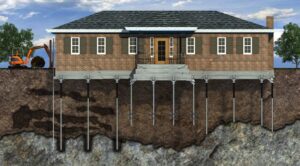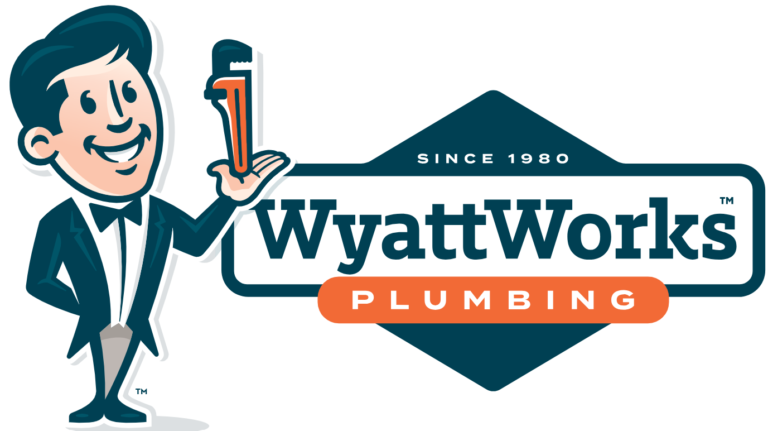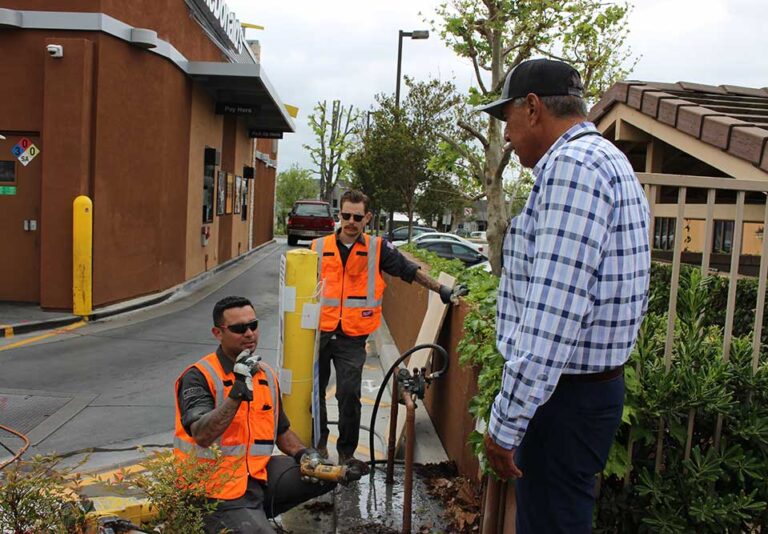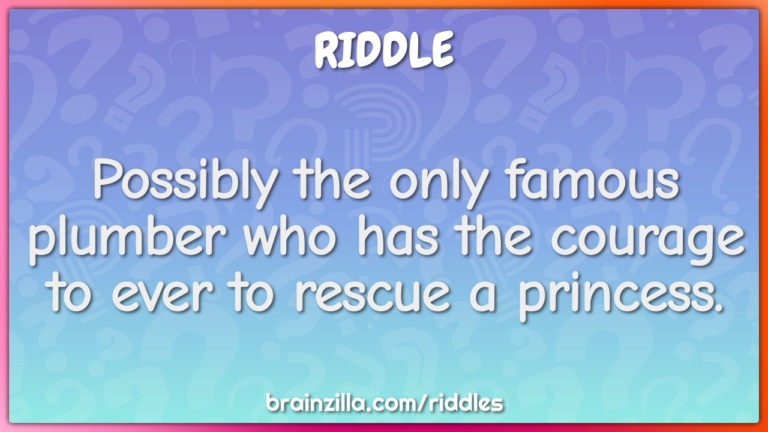What Is The Difference Between Piers And Underpinning?
Piers and underpinning are two common foundation repair techniques used to stabilize and strengthen a damaged foundation. They are both effective solutions to foundation problems but have different approaches. Piers are typically used to support foundations that are sinking due to soil conditions while underpinning is used when a foundation is settling unevenly or has already shifted significantly. Piers are installed by excavating beneath the foundation and then inserting steel or concrete piers to provide a more stable base for the foundation. Underpinning involves excavating around the perimeter of the foundation and then installing concrete footings or columns to further reinforce the foundation. Both methods are effective and can be used to prevent further damage to the foundation.
Definition of Piers and Underpinning
Piers and underpinning are two structural support solutions for foundations that are often confused with one another. Piers are concrete or steel pillars that are installed beneath the foundation of a building. They are used to support the building and to help distribute the weight of the structure along the piers. Underpinning is a method of strengthening and stabilizing existing foundations by reinforcing them with additional structural support, such as concrete or steel. Underpinning is used when the existing foundation of a building has become weakened due to age, wear and tear, or changes in the soil conditions. Both of these solutions are used to ensure the structural integrity of a building and extend its lifespan.
The main difference between piers and underpinnings is that piers are installed before the foundation of a building and underpinning is used to strengthen existing foundations. Piers are placed at specific depths and are typically spaced evenly apart to provide maximum support for the structure. On the other hand, underpinning is used in cases when the existing foundation has become weakened and needs to be reinforced. It is also used to extend the height of a foundation or to extend the footprint of an existing structure. Both solutions are effective at providing structural support and stability to a building and can help extend its lifespan.
History of Piers and Underpinning
Piers and underpinning have been used by builders since ancient times to strengthen the foundation of a structure. In the past, these methods were used for underground structures, such as bridges and tunnels, as well as for foundations of buildings. Over time, however, they have become more commonly used for residential and commercial buildings.
Piers are built into the ground to support the structure while underpinning is a process used to strengthen the foundation of a building without removing or replacing it. Piers are generally built of solid masonry, such as concrete, stone, or brick, and may have a metal or wood frame for additional support. Underpinning is usually done with concrete and may include metal or wood reinforcements.
Both methods are used to increase the stability and strength of a building’s foundation. Piers are typically used to support a structure’s load and to spread it evenly over the ground. Underpinning is generally used to increase the height of a building, to provide additional support to existing foundations, or to protect foundations from water or seismic activity.
Both piers and underpinning are important techniques that builders use to help protect and strengthen the foundations of buildings. By understanding the differences between these two methods, builders can choose the best solution for their project.
Types of Piers and Underpinning
When it comes to installing structural support for a home’s foundation, two main methods are used: piers and underpinning. While both of these methods are designed to support the foundation of a home, there are several differences between the two that are important to understand.
Piers are a type of foundation support that is installed by drilling into the soil and filling the holes with concrete. The concrete is then reinforced with a steel rebar that helps to strengthen the foundation. Piers are also known as deep foundation support since they are installed below the surface of the soil.
Underpinning is a type of foundation support that is installed by excavating the soil below the existing foundation and replacing it with new, compacted material. The new material is then reinforced with a steel rebar to help support the existing foundation.
When considering which type of foundation support to install, it’s important to consider the soil type and moisture levels of the area. Piers are best suited for areas with heavy soils while underpinning is usually used in areas with lighter soils. Additionally, piers are typically used in areas with high levels of moisture, as the concrete helps to protect the foundation from moisture damage.
Both piers and underpinning are effective methods of foundation support, but it’s important to understand the differences between the two before making a decision. Understanding the soil type and moisture levels in the area can help determine the best option for the foundation of a home.
Advantages of Piers and Underpinning
Piers and underpinning are two popular methods of foundation repair and home stabilization. Both have their advantages and disadvantages, and it is important to understand the differences between the two before making a decision.
Piers are vertical columns of concrete, steel, or timber that are used to support a structure’s foundation. They are typically installed below the existing foundation and can support the weight of the structure above them. Piers is also relatively simple to install and typically don’t require a lot of excavation.
Underpinning, on the other hand, is a more invasive repair technique. It involves digging down to the existing foundation and installing support beams or columns to stabilize it. Underpinning is typically used when the foundation is damaged or has started to settle, but it can also be used to strengthen the foundation of an existing structure.
The primary advantage of piers is that they are relatively quick and easy to install and don’t require as much excavation as underpinning. On the other hand, underpinning is more effective at addressing foundation issues and can be used to stabilize the foundation of an existing structure.
When deciding between piers and underpinning, it’s important to consider the specific needs of your home or structure. Professional foundation repair contractors can help determine the best solution for your needs.
Disadvantages of Piers and Underpinning
When it comes to foundation repair, there are two popular methods used to make structural repairs: piers and underpinning. Piers are vertical, often steel, supports for building foundations while underpinning involves excavating below the foundation and installing a new footing. While these two methods are effective, there are certain disadvantages to consider.
Piers can be expensive to install, as they require specialized equipment. Additionally, they may require an engineer to design and supervise their installation. This can add to the cost. Furthermore, piers can be difficult to repair or replace if they become damaged.
Underpinning can also be expensive. It involves excavating beneath the foundation to install a new footing, which is often a time-consuming and labor-intensive process. Additionally, underpinning can be disruptive to the surrounding area, which can be a major disadvantage for residential properties.
Finally, both piers and underpinnings can be difficult to inspect. When installing either method, it is often difficult to determine whether they are installed correctly or whether they have been damaged over time. This can make it difficult to diagnose and repair any potential problems.
In conclusion, piers and underpinning are two methods of foundation repair that can be effective, but both have certain disadvantages. Piers can be expensive and difficult to repair while underpinning can be disruptive and difficult to inspect. It is important to consider these drawbacks when making a decision on which method to use.
Cost Comparison of Piers and Underpinning
When it comes to home foundation repair, two of the most commonly used methods are piers and underpinning. Both of these solutions provide long-term stability for a foundation, and they can also be used to raise a home’s foundation. However, there are a few key differences between them that can help you make the right decision for your home. One of the most important differences between piers and underpinnings is cost.
Piers are typically the more expensive option. This is because they involve drilling into the existing foundation and then installing reinforced steel piers beneath the foundation. This can be a time-consuming and labor-intensive process. Conversely, underpinning is less expensive because it does not require as much drilling or labor. Instead, underpinning relies on pushing or pushing down the soil to create a stable foundation.
When deciding between piers and underpinnings, it is important to consider the cost of the two options. Piers are often more expensive, but they provide a more secure foundation. On the other hand, underpinning is less expensive and can be completed more quickly, but it may not provide the same level of security as piers. Ultimately, it is important to consult with a professional foundation repair company to determine the best solution for your home.
Factors to Consider when Choosing Between Piers and Underpinning
Piers and underpinning are two types of foundation repairs used to strengthen or replace existing foundations. They both have their advantages and disadvantages, so when choosing between the two, it’s important to consider the specific needs of the property. Both are commonly used to reinforce foundations in homes and businesses, but there are some key differences.
Piers are large, hollow concrete cylinders that are driven into the ground to provide extra support to an existing foundation. They are inserted around the perimeter of the foundation and are often used to prevent the foundation from shifting. They are also used to level out uneven foundations. Piers are more expensive than underpinning, but they’re a permanent solution that can last for decades.
Underpinning involves digging out the soil beneath the foundation and replacing it with a new, more stable material. This is often done with concrete, but other materials such as steel, wood, and stone can be used as well. Underpinning is generally less expensive than piers, but it can be less effective in the long term.
When deciding between piers and underpinnings, it’s important to consider the type of soil the property is built on, the size of the foundation, and the amount of time and money available for the project. It’s also important to consider the local building codes and regulations. An experienced foundation repair contractor can help determine the best solution for your needs.
Summary and Conclusion
Piers and underpinning are two common foundation-repairing techniques used to strengthen a damaged or weakened foundation. Piers involve driving metal or concrete cylinders into the soil to provide additional support for the foundation, while underpinning requires excavating and replacing the existing soil with more stable material. While both methods are effective, the choice between them will depend on the specific type of foundation damage and the soil conditions. Ultimately, the best way to determine which method is most suitable for your situation is to consult with a professional foundation repair specialist who can provide an assessment of the damage and recommend the most appropriate solution.
Conclusion
The difference between piers and underpinnings is that piers are used to provide additional structural support to a building while underpinning is used to strengthen the foundation of an existing structure. Both piers and underpinning are important components of a building’s foundation and are used to increase the stability of a structure.








